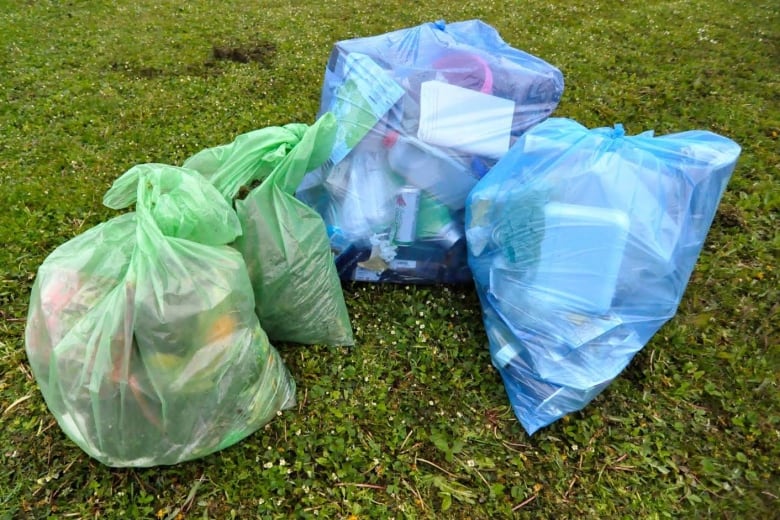Canadians invented the garbage bag. Can we solve the mess they made?
Within living memory, they've gone from domestic blessing to global burden

Welcome time travellers! Inspired by the missing journal pages in Murdoch Mysteries: Beyond Time, we're exploring what Canada might have been like without a few extraordinary citizens.
How often do you steam-clean your garbage cans? When was the last time you wrapped your wet kitchen scraps in newspaper before taking them out to the curb?
These chores are hard to fathom today, thanks to three Canadians credited with inventing the sturdy household garbage bag.
In the 1950s, Frank Plomp, Harry Wasylyk and Larry Hansen all seem to have created their own version of the garbage bag. A new type of tough, flexible plastic — polyethylene — had just become widely available for commercial use. Cities across North America were all looking for more hygienic ways to transport waste.
The garbage bag blew on to the scene at just the right time.

'Garbag' makes its debut
In early 20th century Edmonton, it was common to toss your trash into the river valley or throw it into the street. As cities started offering regular garbage pick-up, households would generally put their ashes, glass and food scraps straight into metal cans.
Health authorities grew concerned about attracting animals like rats, and the Alberta town of St. Albert asked its citizens to "strain all kitchen and table waste and wrap it in paper before depositing same in a refuse can."
It was against this backdrop that Toronto-based inventor Frank Plomp started making "the Garbag" out of clear polyethylene film in the late 1950s.
He sold it to hospitals and businesses like IBM as a way to save money on steam-cleaning garbage cans. After an August long weekend trial run in Ontario's Sibbald Point Provincial Park, Plomp convinced the town of Waterloo to get residents to give them a shot in 1962. That was when he started custom-designing green bags to match people's lawns, to hide whatever they were throwing away.
The Financial Post reported that residents liked how the bags sealed in odours and messes. Plomp thought if residents left the metal cans behind and just put their garbage out in Garbags, collection workers could save time (and their backs) and make less noise.
From blessing to burden

The version that really caught on, though, was the Glad green garbage bag, the brainchild of Harry Wasylyk and Larry Hansen. Staff at the Winnipeg General Hospital had told Wasylyk, a local inventor and entrepreneur, how hard it was to keep their garbage cans sanitary. He started selling them polyethylene bags that he made in his own kitchen.
Meanwhile, Union Carbide's Larry Hansen was making his own garbage bags to use around the plant in Lindsay, Ont. Union Carbide liked what Harry Wasylyk was doing, bought his business.
Union Carbide later marketed the bags under the Glad brand.
It took until the 1960s for plastic garbage bags to really catch on, but now they seem irreplaceable. However, their popularity has led to its own set of problems.
Today, billions of plastic garbage bags are manufactured every year. Trouble is: polyethylene products don't biodegrade. They just break down into smaller pieces that often get eaten by other animals but can't be digested.
Wasylyk, Hansen and Plomp's green garbage bags ranked #36 on the CBC's 2007 show The Greatest Canadian Invention.
Whoever can bring biodegradable, cheap and sturdy alternatives to the mainstream might just clean up on the next list.


